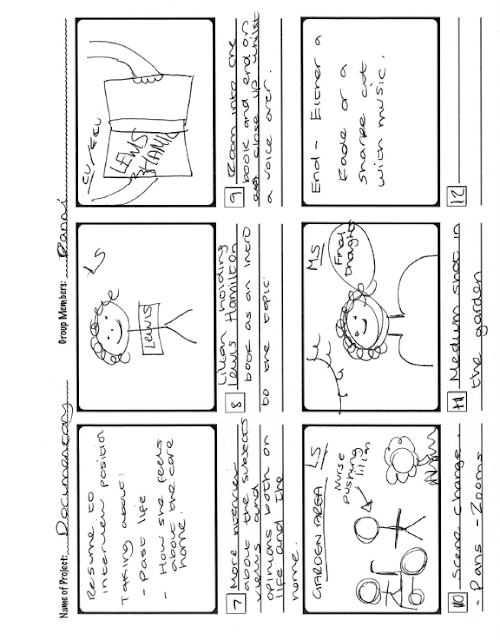Ex-student Alex Barton has created the following guide for students using the JVC cameras which allow for more creativity with audio and video
Preparing the shoot
This should be set for you but you can check
To make sure your videos work
best on the Apple iMacs, click on menu
> file format > QuickTime file format.
To change the size of the
shot: Menu > System Select >
Choose which standard you want. The film world films at 24/25 frames per
second, so click 1080-50/25.
This camera is excellent to
shoot in automatic. Click ‘full auto’ button just to get going.
3CCD means 3 charge coupled device which is just
something to with how much light the camera lets in. This camera works best in
daylight and thankfully, it works very well in automatic mode as well which is
every students dream. Avoid shooting in dark lighting it just looks bad.
Buttons everywhere! But what do they do?
At the front you have the lens which has a little shutter. Flick that shutter to open it. Next to that you
have the focus ring, if you turn
that the focus will increase/decrease.
Next to that you have a filter switch which you’ll use if
you’re outside in daylight. The switch acts as a pair of sunglasses- so you
probably wont need it in Tamworth.
The focus ring has two
different modes - Focus and Zoom.
There is a switch, which allows you to choose which one. Use this for Focus
rather than Zoom.
Auto Focus/Manual Focus- Auto focus usually does the job but if you want to
change settings click manual focus.
White balance switch- you can choose from Preset, A or B. You can change the white balance
and save it the resolution to A or B so you can use the same resolution in the
future. I advise to use the pre-set button which is the automatic function.
The A/B button
next to the white balance switch is for you to select which slot your SD card
is in so the camera knows where to save your work.
If we open up the side screen, there are even more
buttons!
Do not worry about the ‘User
3’ button.
The CAM/MEDIA
button allows you to choose whether to record or playback your footage. You’ll
need this if you’re out on location and you want to check your work as you go.
The quick review button allows you to quickly play back your last shot.
To the side of the microphone you have the audio
section.
Input 1
means you’re the microphone you’re using is in Input 1. Input 2 means the microphone you’re using is in input 2.
If you’re using the shotgun
microphone, switch the settings to ‘Mic+48
volts’.
Put headphones in the
microphone jack at the right side of the camera. You can change the volume of
your footage by changing the audio level in CH1.
On the other side of the
camera you have the zoom rubber switch which
will allow the cameraman to zoom in or out during recording. W is Wide and T is
Telephoto.
SDHC cards are compatible and
must be series 6 or higher. Don’t use SDXC
Ideally buy your own and you
can keep your footage
http://cuvideoedit.com/jvc-camcorder.php
My main advice is to avoid using the zoom and to pay attention to sound by using the headphones to increase awareness.

















